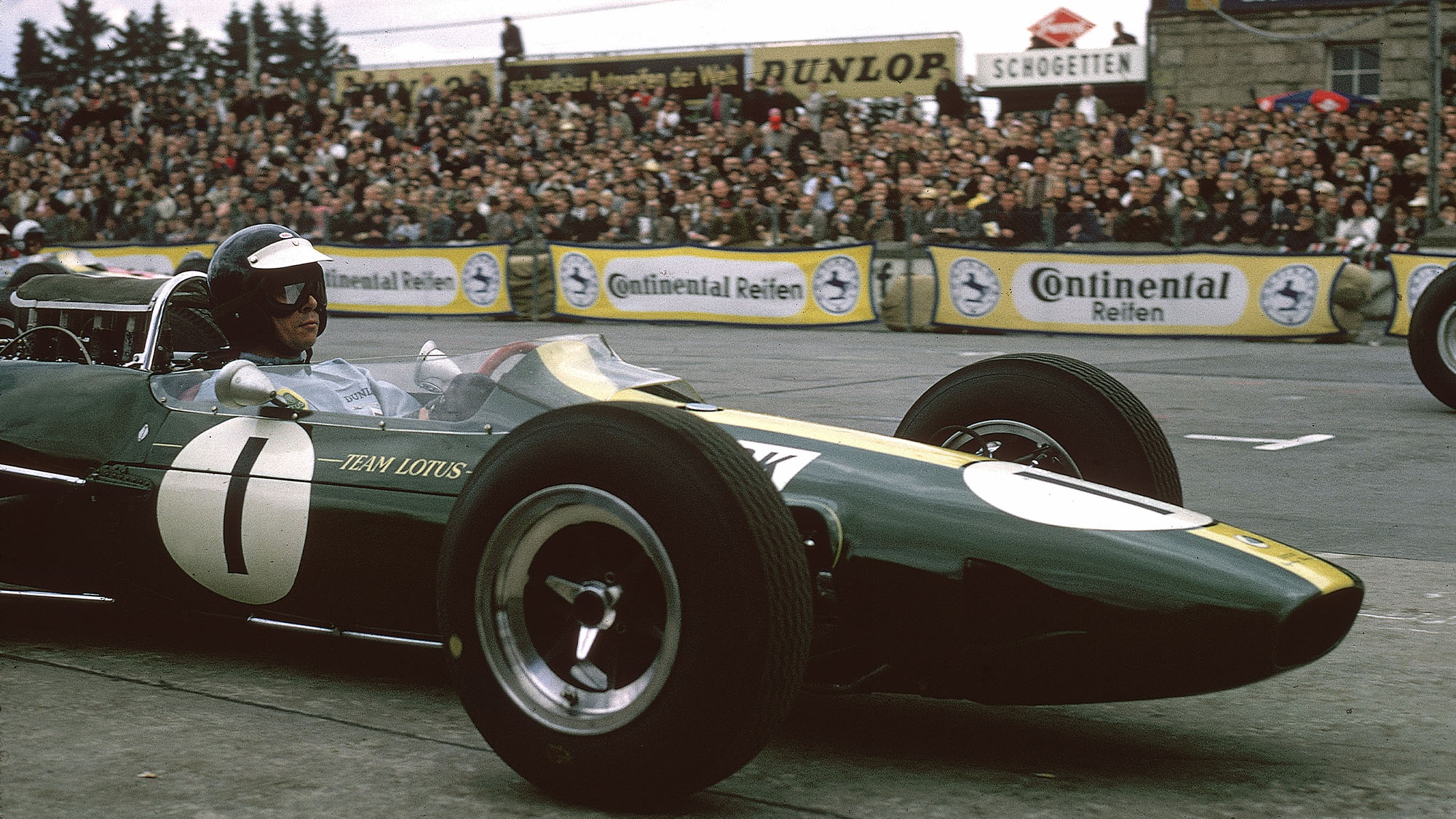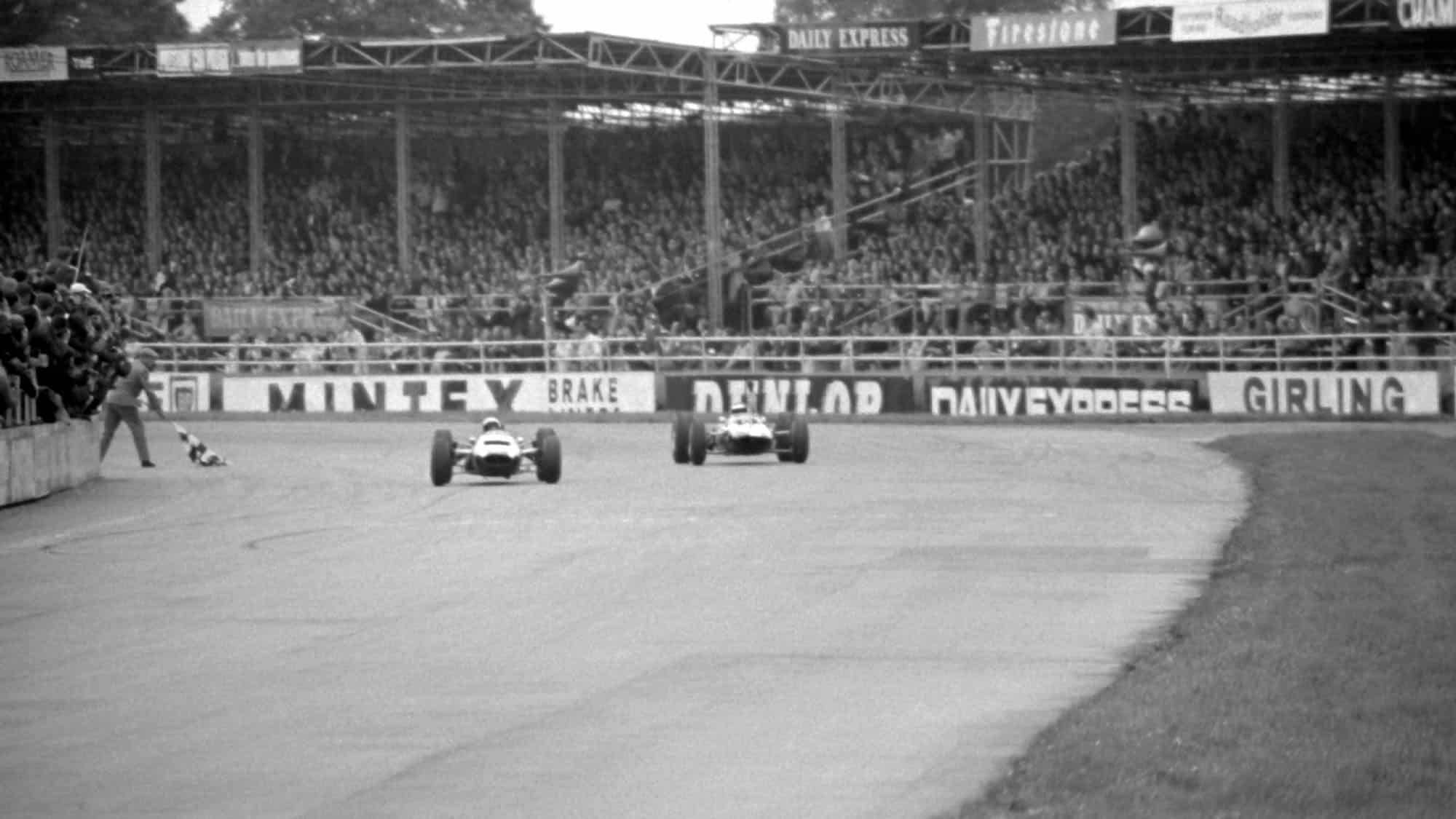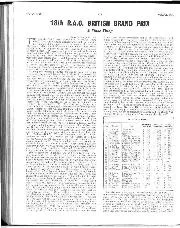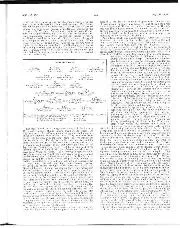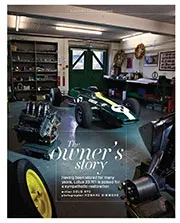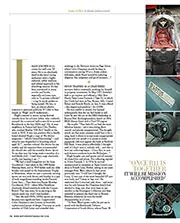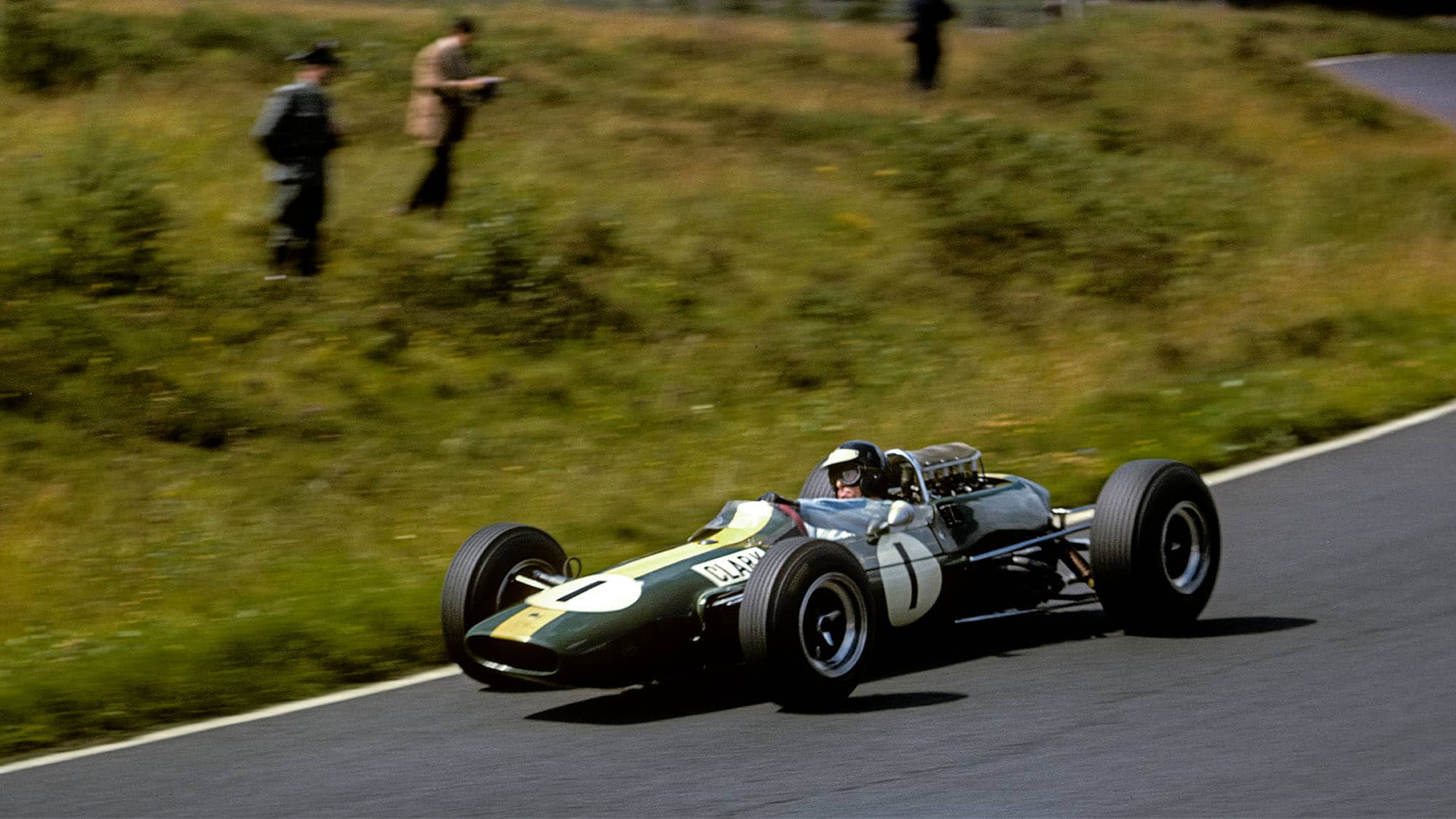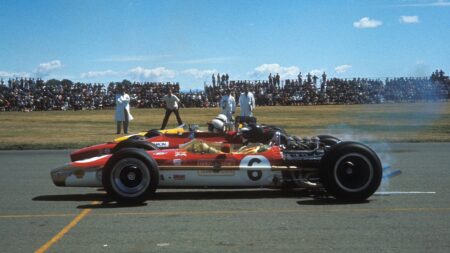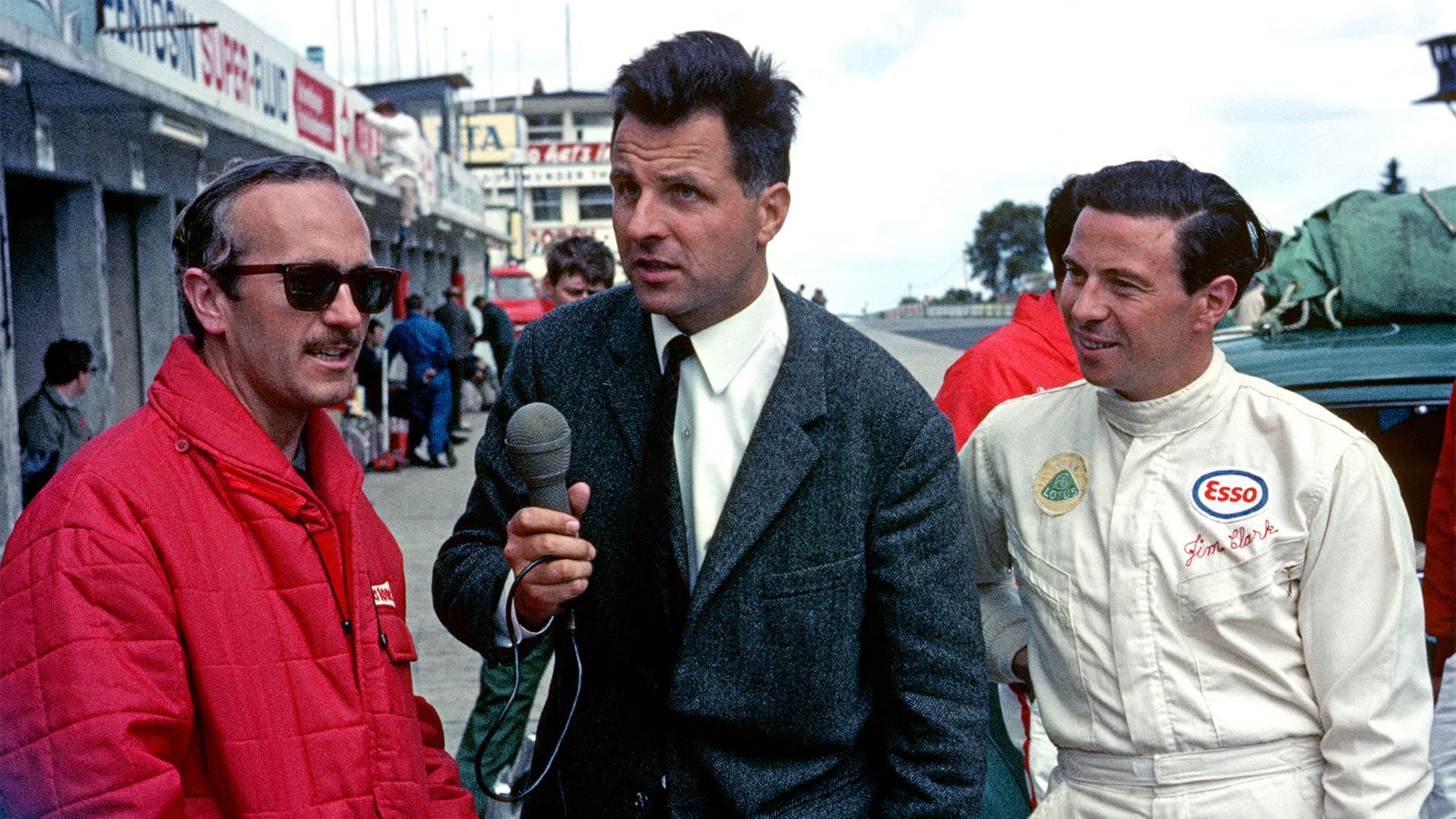“Lap 76, and with the appearance of Clark a hush fell on the huge crowd in the grandstands – 13sec. Lap 77, and it was 11.5sec, Hill having been baulked by a slower car. Lap 78, and the margin was 9sec. With one to go, and Clark’s engine now sounding really dreadful, 5sec separated them.
“Everyone stood up, and commentators Peter Scott-Russell and Keith Douglas were almost beside themselves with excitement. Hill was closing rapidly, but Jim, with oil gauge needle possibly at zero” – which was why he was knocking the gearbox into neutral and just coasting through Silverstone’s long curves – “grimly held his course, knowing that at any moment there might be a loud bang!
“Hill tore round like a man possessed, the crowd now having found voice and urging him on. Yet it was all in vain, for Clark, with a great sigh of relief, and an ear-splitting grin on his face, took the chequered flag just 3.2sec ahead of the gallant Hill. Both drivers were cheered to the echo, for they had provided spectators with the sort of sport that is real motor racing…”
For the second time in a GP, Jimmy had been using the latest 32-valve Climax V8. While its 16-valve predecessor commonly consumed half a gallon of oil per race, at Silverstone the 32-valve burned almost five times as much.
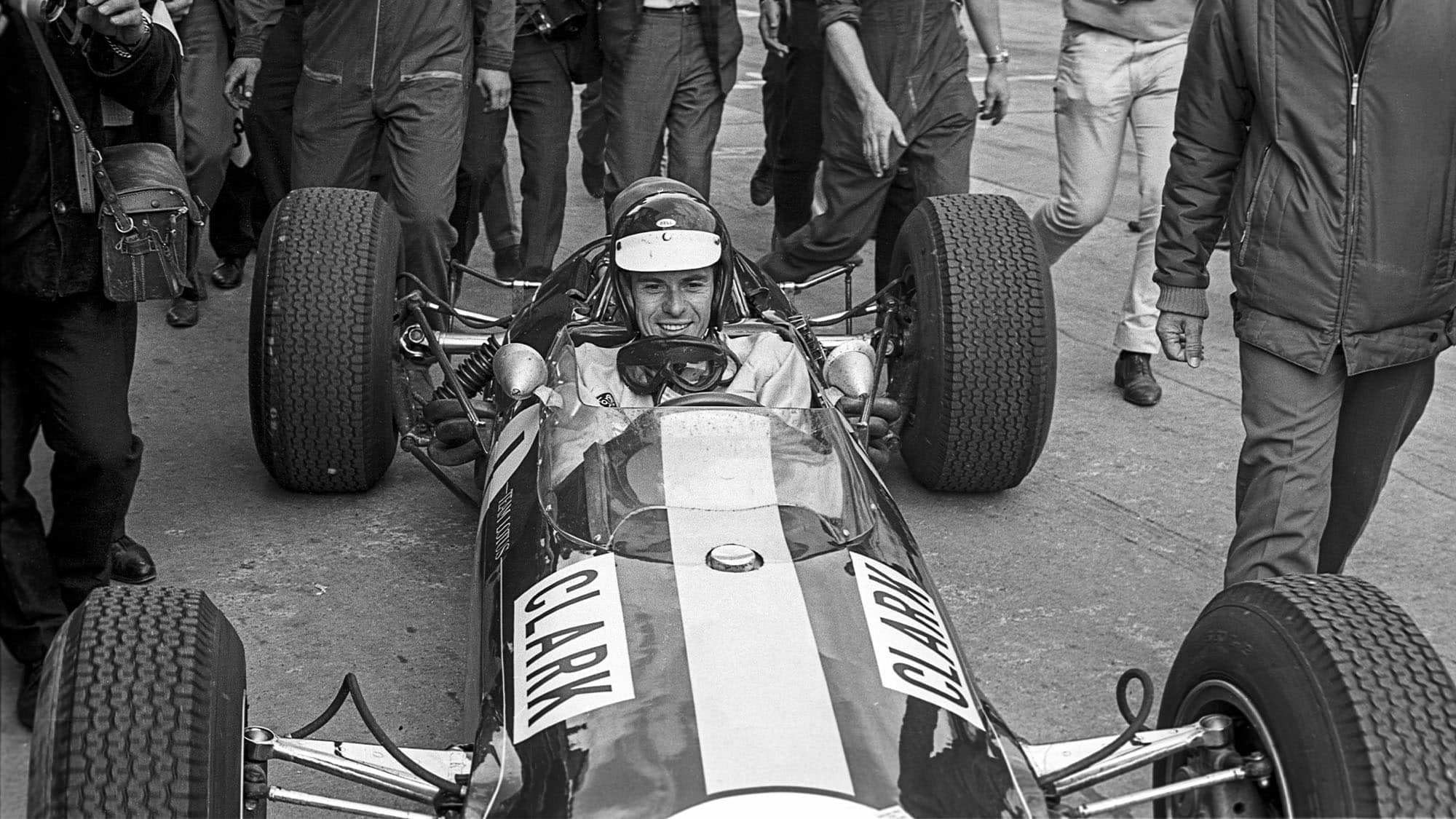
Clark won six out the nine world championship GPs he entered in 1965
Bernard Cahier / Getty Images
It was Jimmy’s fourth consecutive British GP success – to add to his earlier fourth in succession in Belgium. His car on both occasions was Lotus-Climax Type 33 chassis R11, and this is the car long-preserved over the past 38 years by an extraordinarily committed – yet intensely private – Lotus enthusiast.
Type 33 R11 was the second true 33 to be completed, matching R10 with a simpler and stiffer monocoque chassis than the preceding Lotus 25s and two hybrid 25/33 prototypes R8 and R9. The new car made its debut in the non-championship Syracuse GP in Sicily on April 4, 1965. In these pages Jenks reported: “Team Lotus sent two Type 33s, one with a normal Coventry-Climax V8 engine for Clark” – R11 – “and a flat-crank low-level exhaust pipe engine for Spence.”
Jimmy qualified on pole from John Surtees’s Ferrari, and on race day: “While Clark and Surtees got away smartly Siffert” – in Rob Walker’s Brabham-BRM – “had accelerated around the outside of Clark, and while Clark and Surtees were watching each other the Swiss boy shot into the lead.
